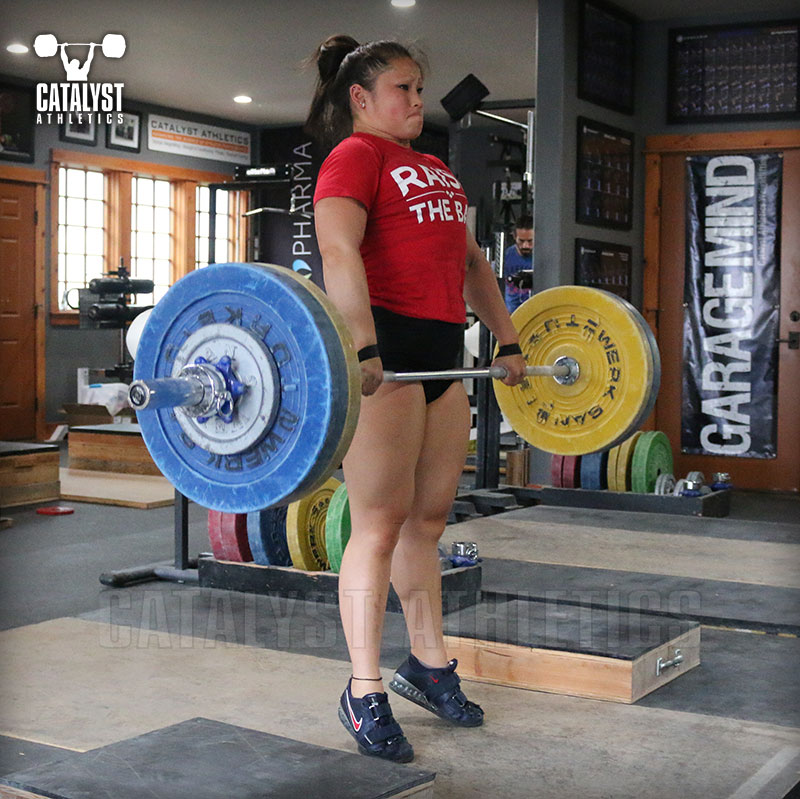Ask Greg: Issue 185

Greg Says: I look at this pretty simply: To build strength in the desired motion, we need to use exercises that replicate that motion; to directly build strength of a certain body part or group, we can use whatever does that most effectively.
In other words, deadlifting and pulling for weightlifting need to be done overwhelmingly with the same position and posture we pull snatches and cleans—lower hips, more upright trunks, more bend in the knees. This ensures we strengthen the actual movement pattern, which means as snatch and clean weights increase, our strength supports the continued proper technical execution.
If we primarily train pulling exercises with more of a hinging position like a traditional deadlift, heavier snatches and cleans will be executed with this position and motion despite our efforts to perform them with what we know to be technically correct positions and motions—we can’t execute a skill dependent on strength if our strength doesn’t support that execution at that level of resistance.
If we need to develop strength in a certain position or of a certain body part or area because we’re aware it’s relatively lacking in strength, we can target it more directly with exercises that don’t necessarily mimic the competition lift positions and motions. The obvious example in weightlifting is the RDL/SLDL or good morning. Never at any point of either lift are we moving that way, but the exercises are useful for building lower back, hamstring and glute strength that can help support the correct positions when one or more of these areas is a weakness.
The bottom line is that the majority of training volume needs to reinforce the positions and motions of the competition lifts, but smaller amounts of volume dedicated to specific weak points can diverge if that’s the most effective exercise for the problem.
| Greg Everett is the owner of Catalyst Athletics, publisher of The Performance Menu Journal and author of Olympic Weightlifting: A Complete Guide for Athletes & Coaches, Olympic Weightlifting for Sports, and The Portable Greg Everett, and is the writer, director, producer, editor, etc of the independent documentary American Weightlifting. Follow him on Facebook here. |
Article Categories
Sort by Author
Sort by Issue & Date

